Performance Optimization Design of Diagonal Flow Fan Based on Ensemble of Surrogates Model
Abstract
:1. Introduction
2. Research Object and Method
2.1. Research Object
2.2. Computational Model and Mesh Blocking
3. Calculation Method and Verification
3.1. Method of Calculation
3.2. Fan External Characteristic Test
4. Ensemble of Surrogate Model and Multi-Objective Optimization
4.1. Parameterized Design of Blade
4.2. Ensemble of Surrogate Model
4.3. Multi-Objective Optimization of Diagonal Flow Fan Blade
5. Numerical Simulation Analysis and Experimental Verification
5.1. Energy Loss Analysis
5.2. Internal Flow Analysis
5.3. Experimental Verification
6. Conclusions
- (1)
- Based on the combination concept, a new Ensemble of surrogates model was generated by combining an RBF model and Kriging model, and the error was analyzed. It was verified that the prediction accuracy of the five test sets of the Ensemble of surrogates model is higher than that of the traditional model in terms of efficiency prediction and flow prediction, and its linear regression coefficient R2 is close to 1, which further verifies that the Ensemble of surrogates model has higher prediction accuracy.
- (2)
- In this paper, the fast non-dominated sorting algorithm was used to optimize the flow rate and total pressure efficiency of the diagonal flow fan, which can greatly reduce the complexity of the calculation and has the characteristics of high accuracy in solving the Pareto solution set. The optimization work should not only focus on the flow rate of the diagonal flow fan, but also needs to pay attention to the efficiency (i.e., energy consumption). Therefore, this paper states that the weight relationship between the two optimization objectives should be considered comprehensively, and proposes a solution that uses the weighted objective function 0.5ηB + 0.5qv to reach the maximum value.
- (3)
- Through the numerical simulation method, the flow characteristics of the diagonal flow fan before and after the modification are studied in depth. It is found that the optimized fan blade has stronger work performance, less energy loss, and significantly improved fan efficiency.
- (4)
- In order to further confirm the accuracy of the prediction method and optimization design, the optimized impeller was proofed and tested. The test results show that the optimized blade increased by 1.7 m3/min and the total pressure efficiency increased by 3.2% under the design condition of the fan.
Author Contributions
Funding
Conflicts of Interest
References
- Jia, L.; Tao, Z.; Wu, H.; Li, S.; Xing, S. Numerical Design and Optimization of the Rear Guide Vanes for a Tubular Mixed Flow Fan. Fan Technol. 2013, 1, 31–34. [Google Scholar]
- Dong, W. Internal Flow Analysis on the Diagonal Fan and Retrofit Design for the Rotor. Master’s Thesis, Northwestern Polytechnical University, Xi’an, China, 2007. [Google Scholar]
- Han, J. Research on Tonal Noise Characteristics and Noise Reduction Methods of Diagonal Flow Fan. Master’s Thesis, Zhejiang University, Hangzhou, China, 2021. [Google Scholar]
- Hou, Z.; Yang, M.; Liang, X.; Wen, D. Numerical analysis and design optimization of diagonal flow fan for locomotives. Kongqi Donglixue Xuebao/Acta Aerodyn. Sin. 2018, 36, 300–306. [Google Scholar]
- Ao, T.; Chen, J.; Cai, W. Analysis of flow loss in Impeller and Diffuser Oblique Flow Compressor. Mech. Manuf. Autom. 2022, 51, 61–64. [Google Scholar]
- Furukawa, M.; Saiki, K.; Nagayoshi, K.; Kuroumaru, M.; Inoue, M. Effects of Stream Surface Inclination on Tip Leakage Flow Fields in Compressor Rotors. J. Turbomach. 1998, 120, 683–694. [Google Scholar] [CrossRef]
- Jin, G.; Ouyang, H.; Du, C. Experimental investigation of extending stall-free mechanism of three-dimensional flow in circumferential skewed axial fans. Exp. Fluid Dyn. 2013, 27, 23–30. [Google Scholar]
- Funakoshi, H.; Tsukamoto, H.; Miyazaki, K.; Miyagawa, K. Experimental study on unstable characteristics of mixed-flow pump at low flow-rates. In Proceedings of the ASME/JSME 2003 4th Joint Fluids Engineering Conference, Honolulu, HI, USA, 6–10 July 2003. [Google Scholar]
- Li, Y.; Ouyang, H.; Du, Z.-H. Optimization Design and Experimental Study of Low-Pressure Axial Fan with Forward-Skewed Blades. Int. J. Rotating Mach. 2007, 2007, 85275. [Google Scholar]
- Liu, Y.; Chen, L.; Shen, P.; Dai, R. Aero-Thermal Coupled Optimization of Turbine Cascade Endwall Based on Multi-surrogate Model. J. Eng. Thermophys. 2020, 41, 2942–2949. [Google Scholar]
- Yang, K.; Zhou, S.; Hu, Y.; Zhou, H.; Jin, W. Energy Efficiency Optimization Design of a Forward-Swept Axial Flow Fan for Heat Pump. Front. Energy Res. 2021, 9, 700365. [Google Scholar] [CrossRef]
- Wang, F. Computational Fluid Dynamics Analysis: Principle and Application of CFD Software; Tsinghua University Press: Beijing, China, 2004. [Google Scholar]
- UNE-EN ISO 5801-2019; Fans-Performance Testing Using Standardized Airways (ISO 5801:2017). ISO Publishing: Geneve, Switzerland, 2019.
- Zhou, S.; Hu, Y.; Lu, L.; Yang, K.; Gao, Z. IGV optimization for a large axial flow fan based on MRGP model and Sobol’ method. Front. Energy Res. 2022, 10, 823912. [Google Scholar] [CrossRef]
- Kulfan, B.; Bussoletti, J. “Fundamental” Parameteric Geometry Representations for Aircraft Component Shapes. In Proceedings of the 11th AIAA/ISSMO Multidisciplinary Analysis and Optimization Conference, Portsmouth, VA, USA, 6–8 September 2006. [Google Scholar]
- Kulfan, B.M. Universal Parametric Geometry Representation Method. J. Aircr. 2008, 45, 142–158. [Google Scholar] [CrossRef]
- Goel, T.; Haftka, R.T.; Shyy, W.; Queipo, N.V. Ensemble of surrogates. Struct. Multidiscip. Optim. 2007, 33, 199–216. [Google Scholar] [CrossRef]
- Wang, L.; Wang, T.; Luo, Y. Improved NSGA-II in Multi-Objective Optimization Studies of Wind Turbine Blades. Appl. Math. Mech. 2011, 32, 693–701. [Google Scholar] [CrossRef]
- Wang, W.; Lin, Z.; Wang, J.; Li, Z. Optimization design of cascade profile based on entropy generation theory. J. Huazhong Univ. Sci. Technol. Nat. Sci. 2021, 49, 52–58. [Google Scholar]
- Yang, F.; Li, Z.; Hu, W.; Liu, C.; Jiang, D.; Liu, D.; Nasr, A. Analysis of flow loss characteristics of slanted axial-flow pump device based on entropy production theory. R. Soc. Open Sci. 2022, 9, 211208. [Google Scholar] [CrossRef] [PubMed]
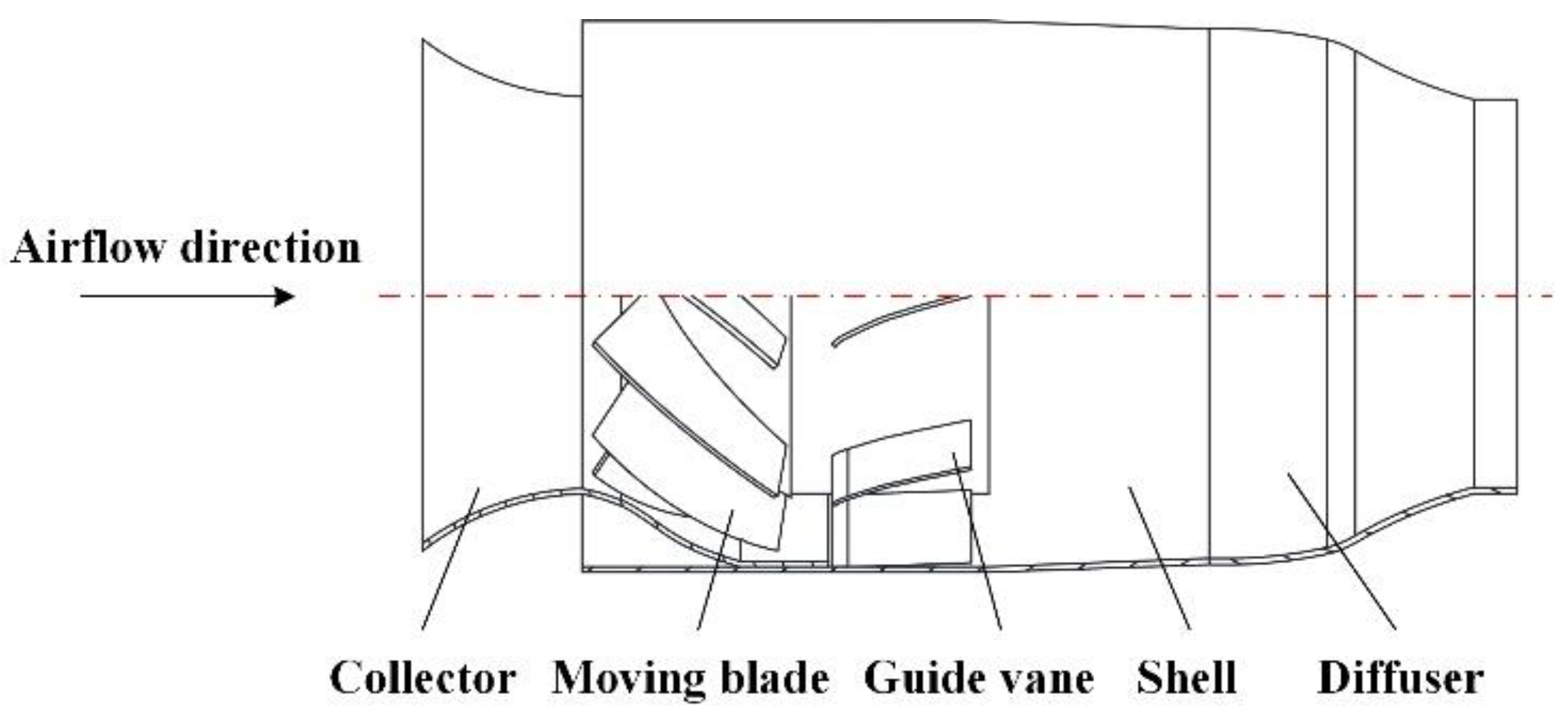


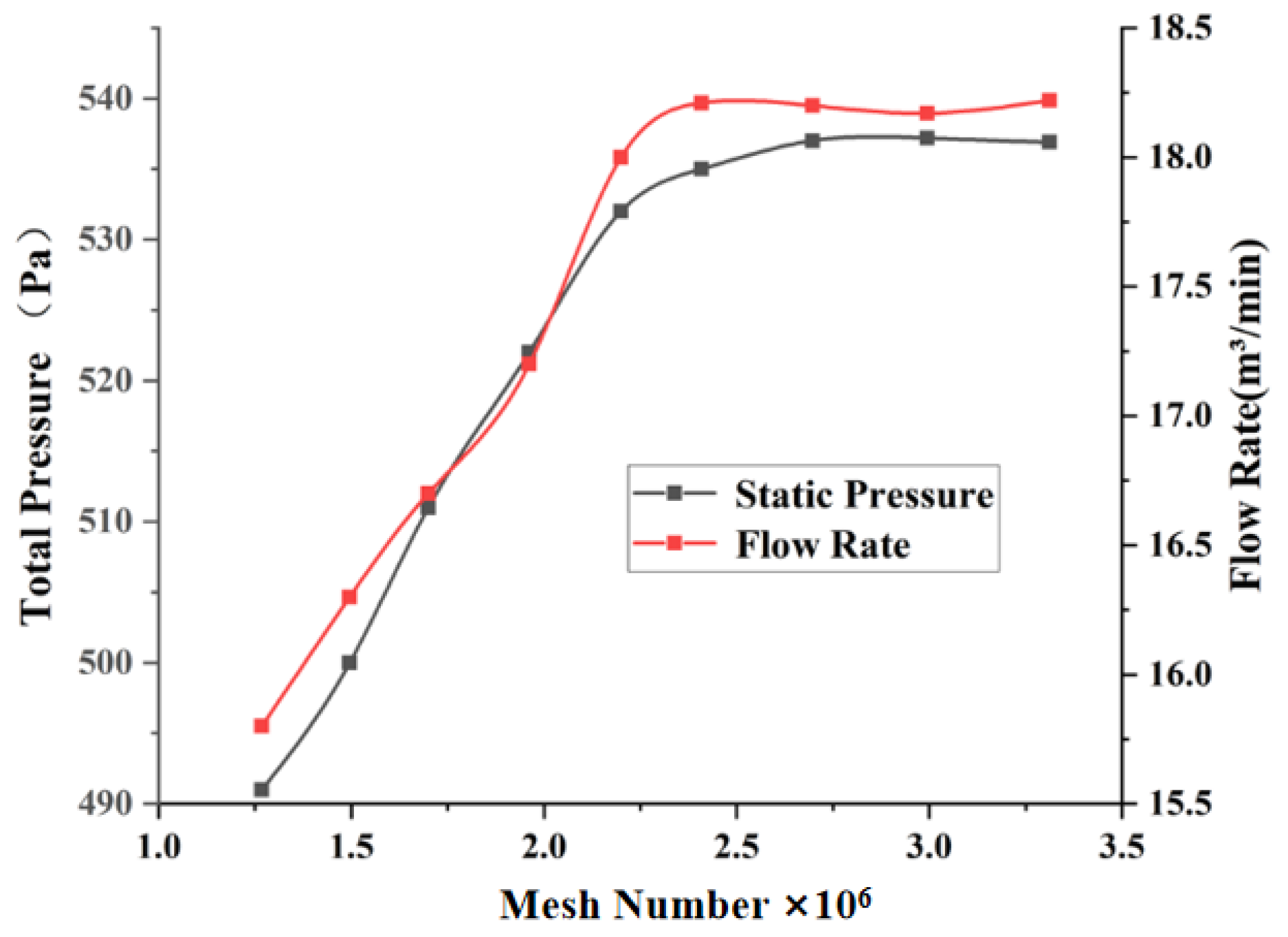

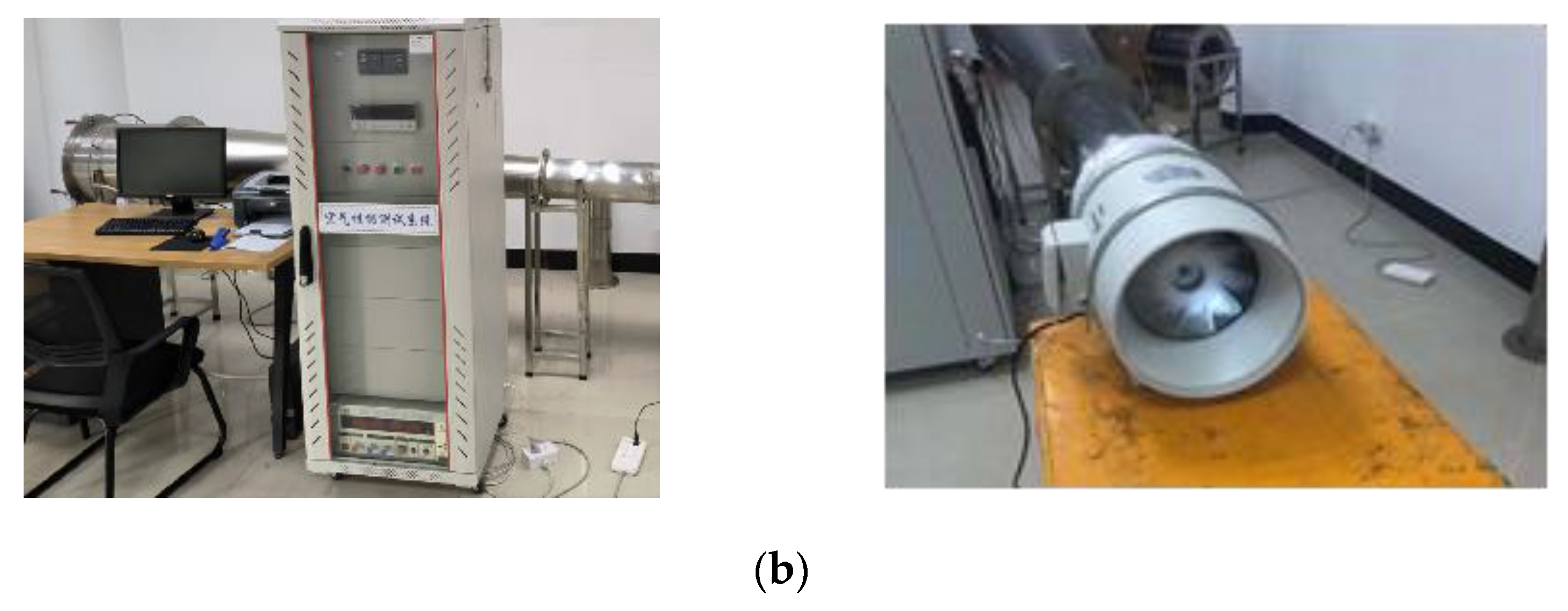


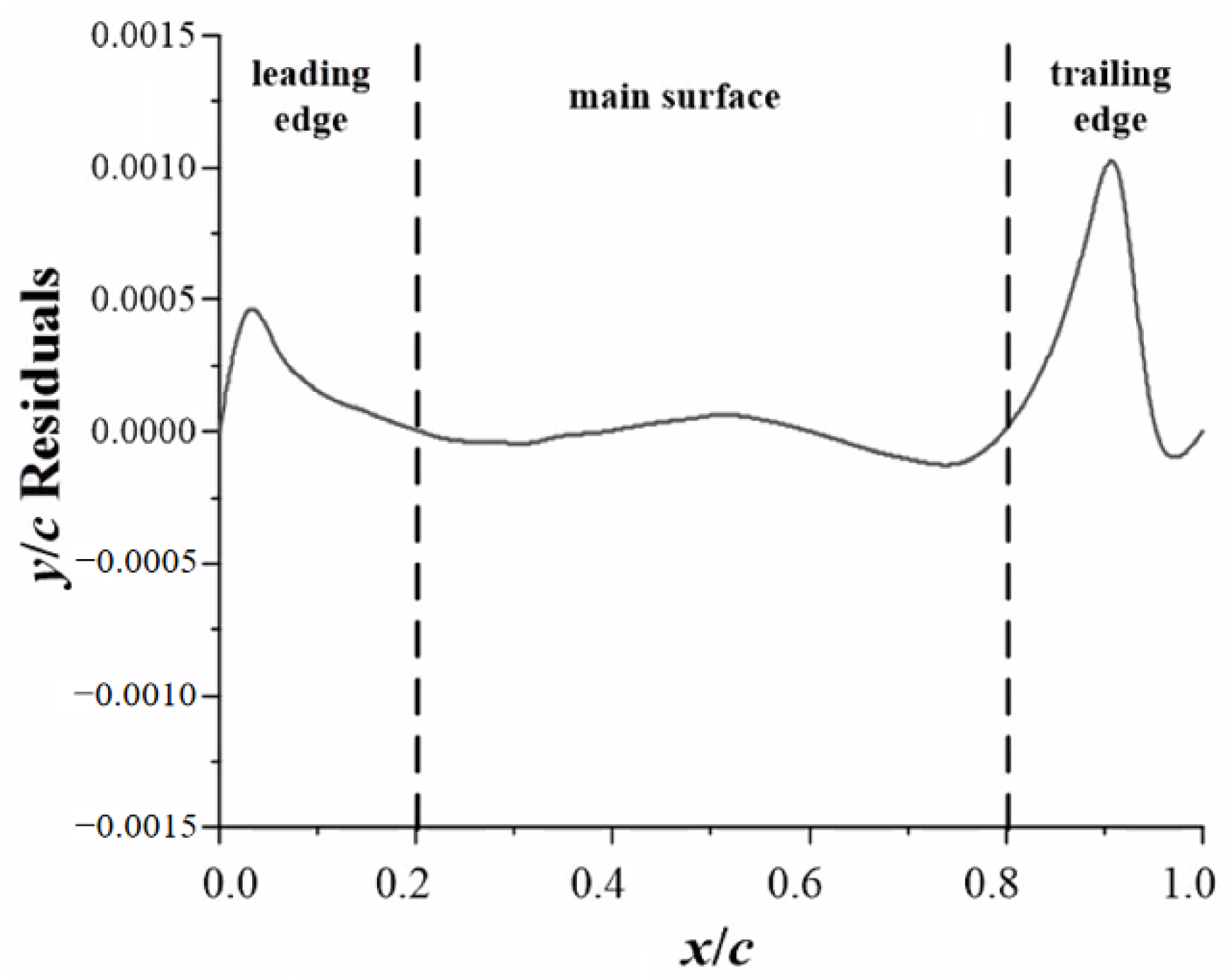

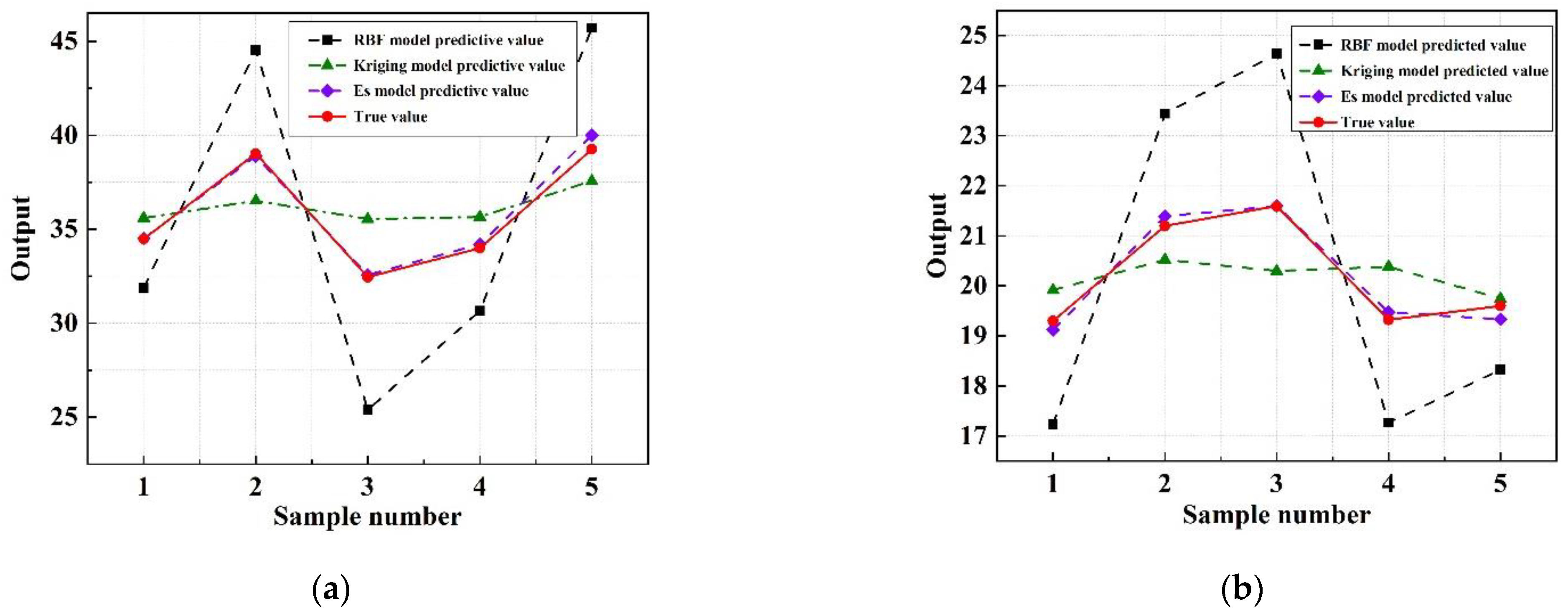


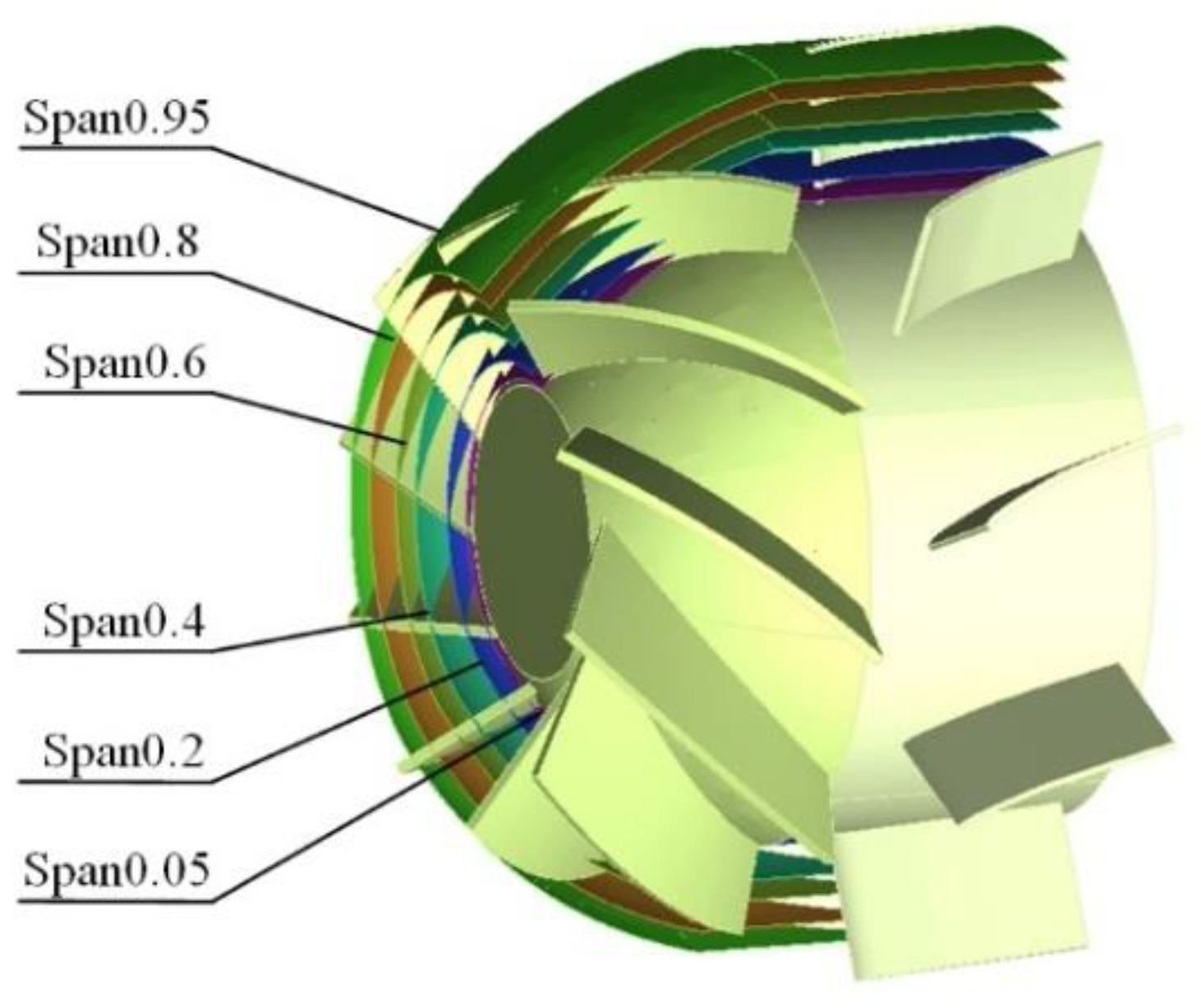
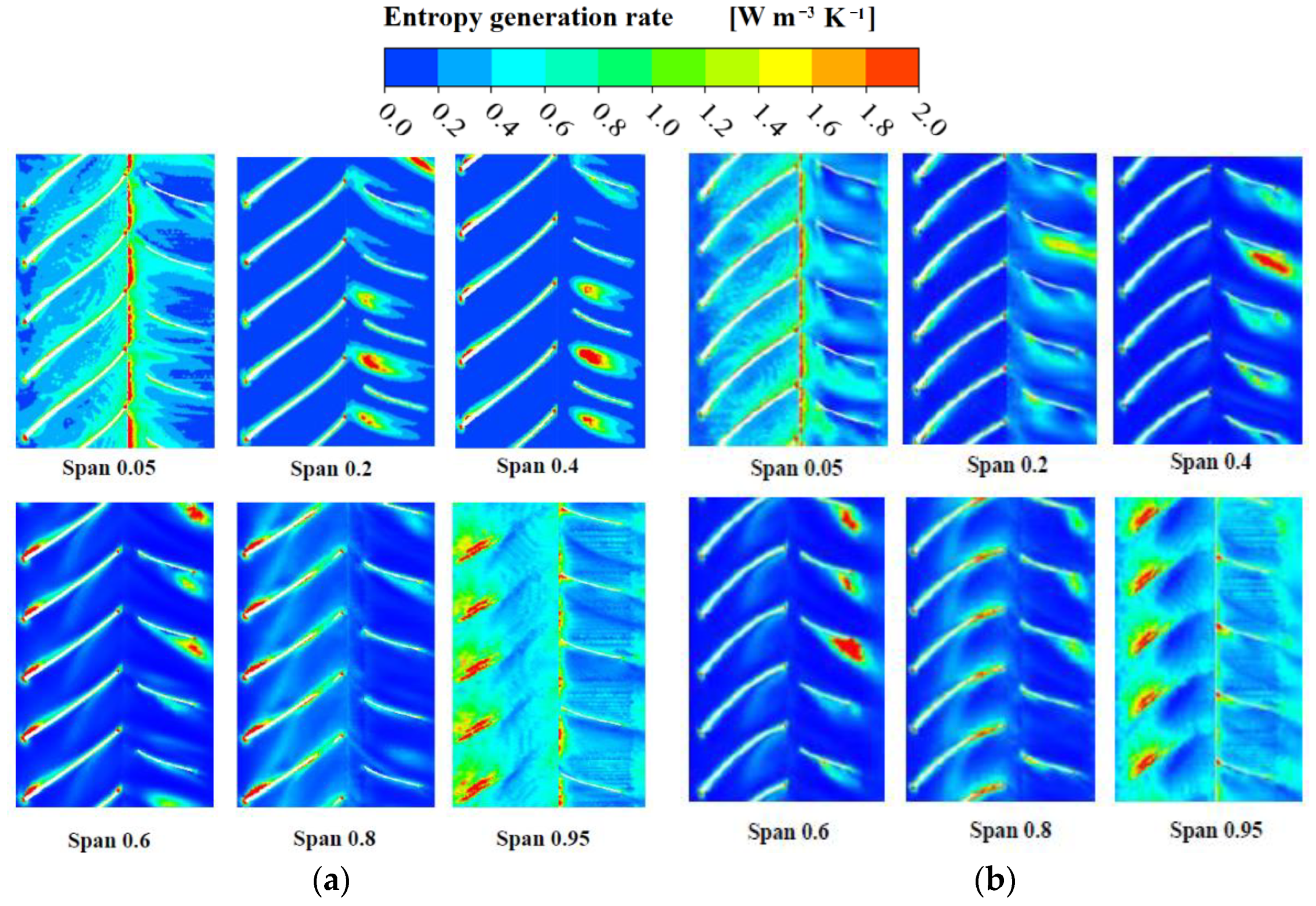

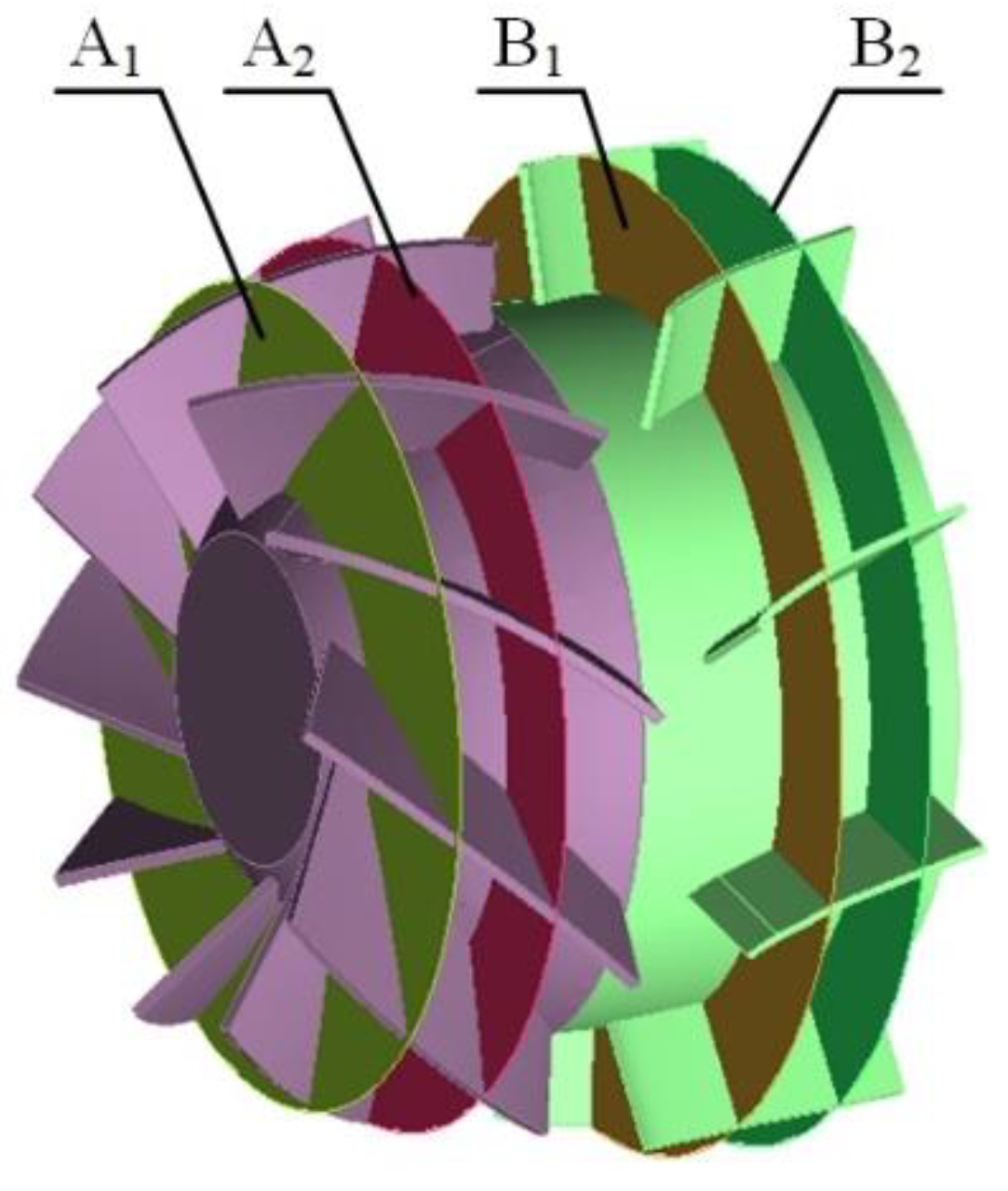




| Delegation Model | Number of Training Samples | Efficiency MSE | MSE Flow MSE |
|---|---|---|---|
| RBF | 40 | 50.183 | 12.542 |
| RBF | 50 | 40.127 | 10.229 |
| RBF | 60 | 34.982 | 7.732 |
| RBF | 70 | 28.212 | 4.908 |
| Kriging | 40 | 70.234 | 19.127 |
| Kriging | 50 | 35.235 | 8.394 |
| Kriging | 60 | 12.175 | 2.598 |
| Kriging | 70 | 4.536 | 0.740 |
| ES | 40 | 17.236 | 10.332 |
| ES | 50 | 4.556 | 3.194 |
| ES | 60 | 1.742 | 0.992 |
| ES | 70 | 0.125 | 0.032 |
| Qv | η | |
|---|---|---|
| R2 | 0.973 | 0.966 |
| Design Parameter | v0 | v1 | v2 | v3 |
|---|---|---|---|---|
| Original | 0.417 | 3.074 | 1.779 | 0.551 |
| Optimized | 0.317 | 1.878 | 1.152 | 0.488 |
Publisher’s Note: MDPI stays neutral with regard to jurisdictional claims in published maps and institutional affiliations. |
© 2022 by the authors. Licensee MDPI, Basel, Switzerland. This article is an open access article distributed under the terms and conditions of the Creative Commons Attribution (CC BY) license (https://creativecommons.org/licenses/by/4.0/).
Share and Cite
Zhou, S.; Lu, L.; Xu, B.; He, J.; Xia, D. Performance Optimization Design of Diagonal Flow Fan Based on Ensemble of Surrogates Model. Appl. Sci. 2022, 12, 9732. https://doi.org/10.3390/app12199732
Zhou S, Lu L, Xu B, He J, Xia D. Performance Optimization Design of Diagonal Flow Fan Based on Ensemble of Surrogates Model. Applied Sciences. 2022; 12(19):9732. https://doi.org/10.3390/app12199732
Chicago/Turabian StyleZhou, Shuiqing, Laifa Lu, Biao Xu, Jiacheng He, and Ding Xia. 2022. "Performance Optimization Design of Diagonal Flow Fan Based on Ensemble of Surrogates Model" Applied Sciences 12, no. 19: 9732. https://doi.org/10.3390/app12199732





